

Barefoot Chef
Malaysian Curry
The history of Malaysian curry can be traced back to the influence of Indian traders who brought spices and ingredients to Malaysia during the 19th century. The Malays and Chinese who lived in the area quickly adopted these spices and incorporated them into their cuisine, giving rise to a unique blend of flavors and spices that's now known as Malaysian curry.
How to make the best Malaysian Curry
A great curry paste is the backbone of any good Malaysian curry. It is made from a blend of fresh ingredients like ginger, garlic, and chilies, as well as dried shrimp, candle nuts, and tamarind paste. The ingredients are ground together to form a paste, which is then cooked until fragrant.
When it comes to making Malaysian curry, it's important to take your time when cooking the paste, it should be cooked until fragrant and slightly browned before adding the rest of the ingredients. This helps to release the flavors of the spices and ensures that the curry is rich and flavorful.
Types of Currys
One of the most popular Malaysian curries is chicken curry, which is made with a rich and creamy coconut milk sauce. The curry paste is cooked until fragrant and then combined with chicken, vegetables, and a variety of spices, such as cinnamon, star anise, and cardamom. The dish is then simmered until the chicken is tender and the flavors have mixed.
Another popular one in Malaysia is fish head curry, which is a spicy and sour curry made with a whole fish head, vegetables, and tamarind juice. The curry is traditionally served with rice and is a popular street food in Malaysia.
There are many other types of Malaysian curry, including vegetable curry, beef curry, and lamb curry. No matter what type of curry you choose, be sure to serve it with steamed rice or some type of bread.
Curry Powder
Curry is a staple dish in Malaysian cuisine, and finding the right curry powder is essential for creating an authentic and delicious dish. The one I prefer for Malaysian curry is Ayam Brand as it's made from high-quality spices and has a great balance of spice and heat. Other options are Baba's, Adabi or Alagappa's curry powders.
Ingredients
For the curry paste
Curry Powder (50g / 2 oz)
6 dried red chilies (seeds removed), soaked in hot water for 15-20 minutes until soft
4 shallots, roughly chopped (100g / 3.5 oz)
4 garlic cloves, roughly chopped (12g / 0.5 oz)
1 inch ginger, peeled and roughly chopped (12g / 0.5 oz)
1 tbsp dried shrimps (12g / 0.5 oz)
2 candle nuts (10g / 0.5 oz)
2 tsp tamarind paste (10g / 0.5 oz)
4 tbsp oil (60ml / 2 fl oz)
1 cinnamon stick
2 star anise
2 cardamom pods
2 cloves
For the Curry
1 lb chicken, cut into bite-sized pieces (450g)
2 tbsp vegetable oil (30ml / 1 fl oz)
1 can (14 oz) coconut milk (400ml / 13.5 fl oz)
1 cup water (240ml / 8 fl oz)
2 tbsp palm sugar (20g / 0.7 oz)
few curry leaves (20g / 0.7 oz)
200g / 6oz mixed vegetables chopped (Carrot, Cabbage, Okra)
Salt and pepper, to taste
Method
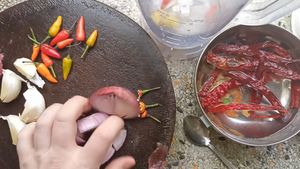
In a small bowl, soak the dried chilies and shrimp in hot water for 15-20 minutes until soft. Drain the chilies, remove the seeds, and roughly chop them. In a food processor, combine the chopped chilies with the shallots, garlic, ginger, candle nuts and oil. Blend until you have a smooth paste.
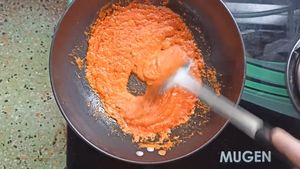
In a large pan or wok, heat the oil over medium heat. Add the curry paste and cook for 10 minutes, stirring constantly, until the paste is fragrant and the oil starts to separate.
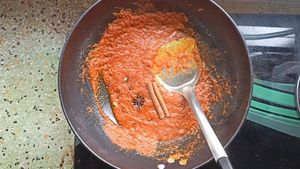
Add the dried spices and cook for 5 more minutes, then add the curry powder. Then after a minute add the tamarind paste, sugar and salt to taste.
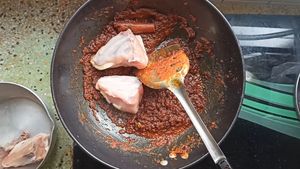
Add the chicken to the pan and stir until it's coated with the curry paste. Cook the chicken for 5-7 minutes, or until it's browned on all sides. Add the coconut milk, water and vegetables to the pan.
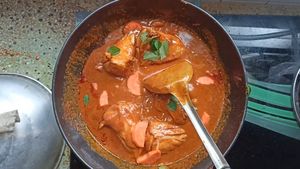
Bring the curry to a boil, then reduce the heat and let it simmer for 20-30 minutes, or until the chicken is cooked through and the sauce has thickened. Season the curry with salt and pepper to taste. Serve the curry over rice, garnished with fresh coriander and spring onions.

Barefoot Chef
This is the barefoot chef
Related Posts

Feb 22, 2023
Rojak - Savoury Spicy Malaysian Salad
Apr 19, 2023
Thunder Tea Rice - Hakka Lei Cha
May 18, 2023
Roast Duck - In a halogen oven
